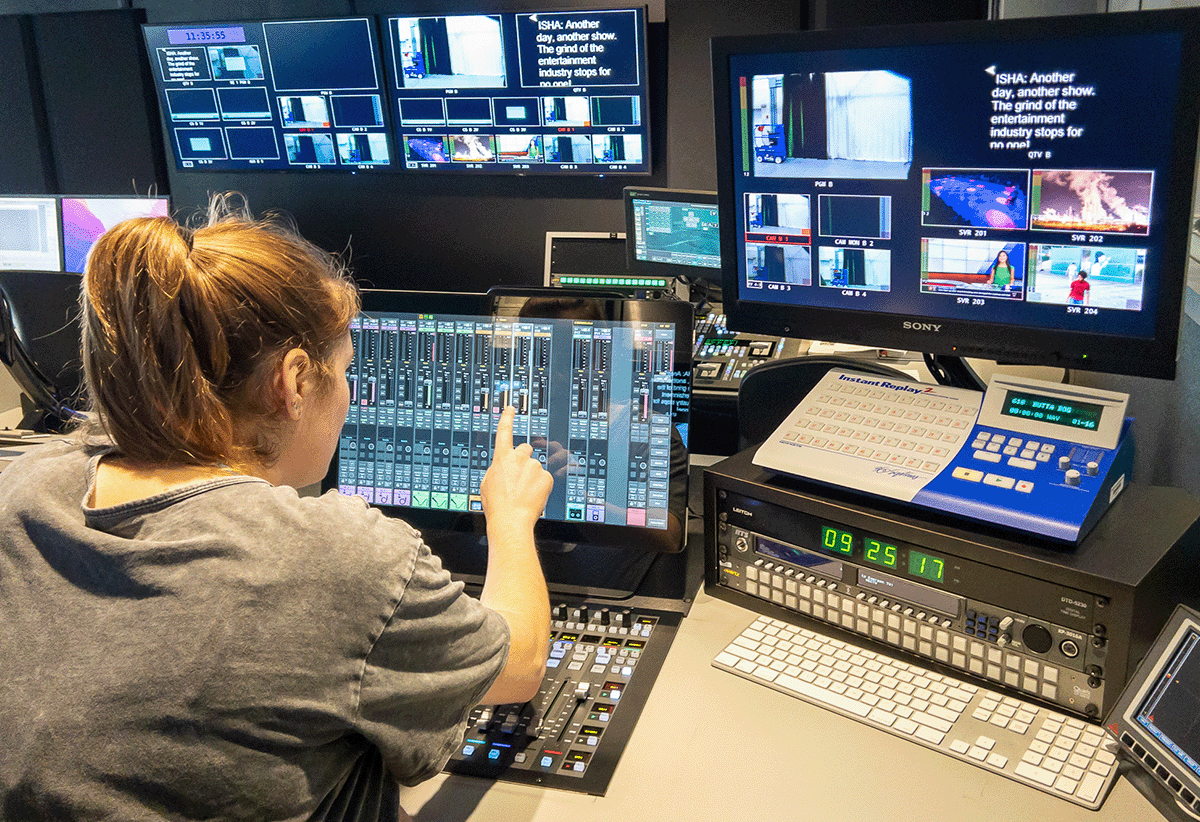Emerson College Upgrades TV Studio Audio With SSL, Dante Solutions
The school has deployed Solid State Logic T digital audio platforms and Dante routing

BOSTON—Emerson College has upgraded broadcast audio capabilities at its downtown main campus, equipping four of its TV production control rooms with Dante-networked Solid State Logic T digital audio platforms.
Powered by a TE1 Tempest Engine, each SSL T platform provides up to 256-path capacity and is controlled by an S300 surface and Tempest Control Rack (TCR) with Fade Tile, the company said.
Three of the upgraded control rooms originally were built in 2003 and underwent a previous update in 2010. That installation include SSL C10 HD digital broadcast desks.
“We were so pleased with the C10 that we wanted to stick with SSL,” says Tim MacArthur, director of technical operations for media technologies and production, which oversees use of the college’s production and post-production technology.
The college replaced the C10 with an SSL System T S300 surface in its Audio A Studio in the Vin Di Bona Television Studio in the Tufte Performance and Production Center (PPC). “We wanted to increase the flexibility of pooled resources among our facilities, and this summer we embarked on a complete central machine room initiative,” said MacArthur. “Previously we had three disparate machine rooms for our facilities but wanted to consolidate, so we invested in new fiber to make that happen.”
The Tufte Television Studios also are home to the Teaching Studio and Control Room B, a classroom inside a standard television control room, where the audio facilities now incorporate a System T TCR—a 3RU PC enclosure that runs System T control software—as well as a Fader Tile control interface.
The TV studios are now interconnected with the nearby Journalism Production Center, Emerson Television Channels, the Bobbi Brown and Steven Plofker Gym and Cutler Majestic Theatre.
Get the TV Tech Newsletter
The professional video industry's #1 source for news, trends and product and tech information. Sign up below.
The college also replaced its core Evertz router with a Dante hub. It enables embedding, de-embedding and other functions necessary to transport signals in a Dante environment and process them with System T. “Using Dante with multicast was just such an appealing promise to us; being able to grab a mic from a preamp in one studio and bring it to a control room in another,” said MacArthur.
Besides the Dante workflow, the college was attracted to the solution because of the infrastructure flexibility the System T and Dante offer. “And logic is intuitive once you wrap your head around the new world of audio routing,” he said. “Plus, the power of the effects processing on every channel is just phenomenal.”
The college also deployed an SSL System T Fader Tile and TCR systems at the control room and studio facilities in the Journalism Production Center. “It’s largely instructional, so we’re teaching journalists and producing daily newscasts, whether they’re self-contained as a course resource or posted online,” he says.
A Fader Tile and TCR combination also was integrated into a control room in the nearby Bobbi Brown and Steven Plofker Gym to support live coverage of men’s and women’s basketball and volleyball games. The onsite mix control system is networked to its TE1 Tempest Engine in the central machine room in the Tufte PPC.
Students find the upgrades particularly appealing, said MacArthur. “What’s interesting for us, with the generation of students that we have now, and especially with the TCRs, is the touch screen option,” he said. “So many of our students will intuitively grab a ‘fader’ with their finger and slide it. It’s a very elegant display.”
The physical controller also meets the college’s requirements for solutions that stand up to the wear and tear that can be expected in an educational setting. “The Fader Tiles are so well constructed. We’re optimistic about their durability with novice users,” he said.
Diversified provided system integration services for the upgrade.
More information is available on the company’s website.
Phil Kurz is a contributing editor to TV Tech. He has written about TV and video technology for more than 30 years and served as editor of three leading industry magazines. He earned a Bachelor of Journalism and a Master’s Degree in Journalism from the University of Missouri-Columbia School of Journalism.

